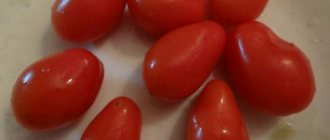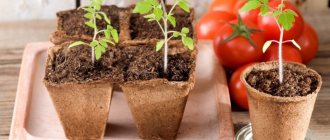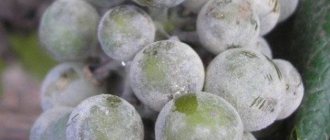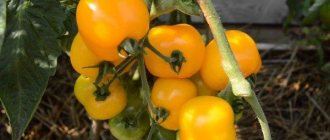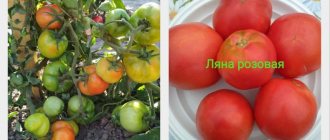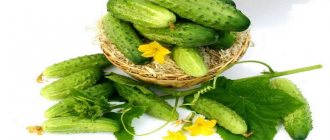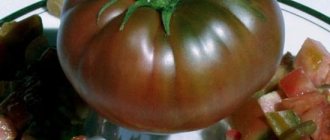Advantages and subtleties of the method
This method seems incredible to beginners, but it is real and has been used by summer residents for many years. The following types of plants are successfully grown in toilet paper:
- tomatoes;
- sweet and bitter peppers;
- cucumbers;
- onion;
- eggplants.
The method is also suitable for growing flowers. One of its advantages is that young plants will not be affected by the “black leg”. This is a dangerous disease that occurs when sprouts come into contact with the ground. The rolls take up little space, but over time the sprouts need to be planted in suitable containers and cared for before planting in a greenhouse or open ground.
Sometimes seedlings in rolls do not have enough light. You need to monitor it, periodically turning it towards natural light, otherwise the seeds will not germinate. With proper care, the seedlings turn out strong, but squat. Their survival rate when planted in the soil is high.
Important! When wrapping seeds in paper, do not place them close to each other so that they do not stretch.
If the seedlings stretch out, their roots will be weak. This can be avoided by correctly positioning the seeds when placing them in rolls. Popularly, this method received another name: rolling a cigarette. It is best suited for all types of onions because the onions do not need to be planted in pots. It can be planted in the ground without removing it from the paper.
Moscow method of growing seedlings: tips and reviews
Often, when growing seedlings, gardeners encounter various difficulties.
Either the seeds do not germinate, or there is not enough space on the windowsill. And it happens that after sowing they do not germinate. Then they sow again, but this time in handfuls, so that they sprout. And soon a thick green brush appears on the surface. They break through quickly so that the plants do not stretch out. What a hassle with these seedlings! It turns out that they themselves are to blame for their failures. After all, there is a Moscow way of growing seedlings. It is very convenient to use it in an apartment.
Landless method of growing seedlings
As the name suggests, seedlings can be grown without the use of soil.
This is convenient because not everyone has harvested land in February. You can use much less seeds, because you don’t need to break through them. But you will have to spend a little time.
Another name for this interesting method is self-rolling.
Seedlings are obtained in this way as follows:
- The polyethylene film is cut into long strips 10 cm wide.
- Two layers of toilet paper are laid on the film (if one is multi-layered, then one is enough).
- Wet the film with water at room temperature.
- Having retreated a centimeter from the edge, spread the seeds every 1, 2 or 3 cm (depending on the crop) along the entire length of the tape.
- Repeat the procedure in reverse order: cover with a layer of paper, moisten, if necessary, place a layer of plastic film on top (you can do without it).
- Carefully roll the tape into a roll, without pulling or displacing the seeds, and secure with an elastic band, thread or wire.
- Take the roll in your hand so that the seeds are at the top and place it in a glass of water. It is advisable to add a growth stimulator. It protects against diseases, strengthens the immune system, and shortens the engraftment period.
- The water should not reach the level of the seeds by a couple of centimeters.
- Sign the name of the variety so as not to forget.
- Cover the top with film, but loosely so that air can pass through.
- The water must be periodically changed to fresh water to prevent mold from growing in the glass.
When the seeds germinate and green sprouts appear from the film, it is advisable to feed them with mineral fertilizers (humic for seedlings), reducing the dose by half compared to the usual method.
You need to repeat fertilizing when the first real leaf is formed.
Planting
They operate depending on the culture. If seedlings need to be plucked, you can use one of the following methods:
- Each sprouted seed is placed in a film measuring 20-20 cm. Add a couple of spoons of prepared soil and wrap it so that the top is open. All bags are placed in one box. Water carefully so as not to overwater. Ten days before planting, add a spoonful of soil.
- The sprouts are planted in separate cups or cassettes, and you can remove the plants from the paper or plant them with it, after cutting the tape into pieces.
You can use tweezers to help avoid damaging the plants.
If the seedlings do not need to be planted, then they are planted directly into the ground.
What do they sow?
The Moscow method of growing seedlings is not suitable for large seeds, such as legumes and corn.
But for every little thing that is usually difficult to germinate, it’s just right.
These are peppers, tomatoes, eggplants, cabbage, carrots, parsnips, and onions. Many flowers, such as asters, petunia, viola, delphiniums.
You can germinate the seeds of cucumbers and melons, but only for planting sprouted grains in the ground. If leaves begin to form, the plants will take root very poorly.
Growing strawberries using a landless method
Everyone's favorite strawberry is usually grown from seedlings.
But we often come across seeds of various remontant varieties that we would like to have. After all, they do not form mustaches and provide harvests until late autumn. But since there are no shoots, how can they be propagated? Collect seeds and germinate them.
Those who have tried to grow strawberry seedlings know that it is quite difficult to do. If the seeds are buried deep into the ground, they will not sprout. And on top they dry out from lack of moisture. Therefore, the Moscow method of growing strawberry seedlings will come in handy. And if you consider that when growing strawberries from seeds, diseases of this crop are practically not transmitted, then the benefit is double.
But first, the seeds need to be stratified for three months in damp calcined sand at a temperature of 2-4 degrees. Sown in greenhouses in December, at home - in February.
You can plant in cassettes in one and a half, or even two months! By this time the plant should have one or two true leaves.
Advantages of the landless method
Seeds:
- germinate well;
- not affected by blackleg;
- take up less space.
When sowing tomatoes in boxes, we place the seeds in the expectation that they will not germinate well. And we almost always get thickened shoots. The Moscow method of growing tomato seedlings makes it possible to get rid of this problem. After all, all the seeds are at an equal distance from each other. And if one doesn’t sprout, it won’t be noticeable in the roll. When planting, you need to cut off a third of the root so that a strong root system is formed.
Flaws
Some sources claim that the Moscow method of growing seedlings does not allow growing plants with a well-formed root system.
They say that seedlings in a roll are not well lit enough. This leads to their stretching. Therefore, for plants that require picking (tomatoes, peppers, cabbage), the Moscow method of growing seedlings is not the best. Reviews from many gardeners, however, indicate that they have successfully used this method for a long time and are very pleased with the result.
Growing onion seedlings
For many cold-resistant crops, this method is simply irreplaceable.
The Moscow method of growing onion seedlings allows you to get beautiful seedlings without any problems. They are planted in a permanent place along with a piece of paper. You just need to correctly determine the sowing time so that you don’t have to plant it in frozen ground. This is approximately the second week of April.
It should be noted that some sources claim that the landless method is not suitable for onions and other small-seeded crops. Perhaps the technology was broken in some way.
Growing petunia seedlings
Common varieties of petunias reproduce on their own, producing a large amount of planting material in the spring. But with the charming variety of hybrids there are often problems. No matter how hard you try, there are very few shoots. And even those soon fall down as if knocked down, struck by a black leg. The Moscow method of growing petunia seedlings helps to obtain the required number of plants. Despite the fact that the flower is quite capricious to grow.
Perhaps the Moscow method of growing seedlings is not suitable for someone, and he gives preference to some other. But, undoubtedly, this method has reliably taken its place among others.
fb.ru
Landing rules
To make roll-your-own cigarettes, prepare:
- toilet paper;
- polyethylene film;
- several plastic cups;
- pieces of paper with the names of plants.
Cut strips from the film. Their width should be about 10 cm and length – 40-50 cm. If you sow the seeds of one plant, make two or three rolls 40 cm long. Place the paper in one layer on the prepared polyethylene and lightly spray it with water from a spray bottle.
Spread the seeds evenly. The distance between them should be from 4 to 5 cm. Make an indent of 1 cm from the edge of the strip. To work with seeds, it is better to use tweezers. The finished seedlings must be covered with a strip of polyethylene on top and the material carefully rolled up. Wrap the roll so that the film does not move and secure it with an elastic band. You can use a piece of soft and thin wire. Now you need to put the “roll-your-own” in a glass of water. Pour a little water, about 4 cm. Glue a piece of paper on it indicating the type of crop and cover it with a bag. Make several holes in the bag to allow the plants to breathe.
After emergence, apply the first fertilizing with complex mineral fertilizer. Look at the instructions for the concentration of fertilizer and make it half as much. Use humin-based fertilizers and regularly add the required amount of water to the cups. When a full-fledged leaf appears, feed the seedlings a second time.
Grown seedlings can be planted in pots. Leafy vegetables are picked after full leaves appear. The onion is replanted when its root system is strengthened.
The roll needs to be rolled out and the film removed from it. Cut off the sprouts without separating them from the paper base. The main thing is not to damage their roots. Plant the seedlings together with the paper in pots and carefully water them. After it gets stronger, you can plant it in a greenhouse or in the soil.
Sowing petunia seeds and picking seedlings
Very often, novice gardeners complain that they cannot sow petunia seeds correctly because they are too small. There are several ways to grow petunia seedlings from seeds. Let's look at the two simplest methods. The first simple way to grow petunia seedlings from seeds using snow. Since petunia is sown for seedlings in February or early April, there is snow outside. This is what we will use. Snow should be poured on top of the planting containers. Petunia seeds are very small and can only be seen against a light background, the role of which will be played by snow. You need to place the seeds on your left hand and, bending it slightly, drop a few pieces into each container onto the snow. The container is placed in a tray, covered with a plastic bag and placed on a well-lit windowsill in a warm room. From time to time, the polyethylene should be opened slightly to ventilate the seedlings. Snow is good not only for its color, but also for its ability to melt. As it melts, the snow will draw the petunia seeds into the soil, which will settle from moisture. The first shoots of petunia should appear on day 4-5. The second simple way to grow seedlings from seeds It is not always possible to find snow in winter, and even more so in spring. Then seedlings from petunia seeds can be grown in the following way. In a wide bowl we make several through holes to drain water. We fill the bowl with soil for growing seedlings, not reaching the edges of the bowl 2 cm. We take a spray bottle and thoroughly spray the surface of the ground with water. We make small grooves in the ground no more than 0.3 mm deep. Sow petunia seeds in the furrows. You need to do this very carefully, better - armed with a magnifying glass and a lamp, because
the seeds are so small that they are difficult to see even in daylight. Important: under no circumstances should we cover petunia seeds with soil! Next, cover the bowl with a plastic bag and place the bowl in a warm place, ideally next to a central heating radiator. From time to time we check the condition of the future seedlings - ventilate, if necessary - moisturize
As a rule, on the 4-5th day with such sowing, the first sprouts of petunia begin to appear. Caring for petunia seedlings As soon as the seedlings “hatch”, remove the plastic bag and expose the bowl with the seeds to the light. If there is not enough daylight, we install additional lighting in the evenings. As soon as the first two cotyledon leaves appear from the seed, you need to add a little soil to the base of the sprout using a match. It is advisable to water the seeds either from a syringe or into a tray, which is a more advantageous option. If the petunia is not properly moistened or the soil conditions are poor, moldy formations appear among the weak roots of small sprouts. You can get rid of this fungus using regular sand. To do this, you will need to take a small amount of sand, about 200 grams, and heat it in a dry frying pan. This must be done to disinfect the sand. And when it cools down, slowly sprinkle it onto the sprouts. Dry sand will penetrate to the base of the sprouts, dry the soil and help get rid of the disease, popularly called “black leg”. Also as a preventive measure against this phenomenon, which can lead to the death of all seedlings, you need to water the soil with a weak solution of manganese one day before sowing the seeds. Picking petunia seedlings As soon as the first two true leaves appear, the petunia needs to be picked. To do this, you need to prepare small plastic cups with drainage holes. We fill the cups with light soil and use a wooden stick to make a small depression. Using a toothpick, remove each petunia sprout from the bowl (preferably with a small lump of earth), place it in the recess up to the seven-lobed leaves and press the soil around the stem with your fingers. Using a syringe, carefully moisten the soil in the cup. Subsequent care of petunia seedlings will consist of watering through a tray, regulating sunlight, gradual hardening, and final planting in a pot or in a permanent place of growth in open ground. krasotizemli.ru
Planting
They operate depending on the culture. If seedlings need to be plucked, you can use one of the following methods:
- Each sprouted seed is placed in a film measuring 20x20 cm. Add a couple of spoons of prepared soil and wrap it so that the top is open. All bags are placed in one box. Water carefully so as not to overwater. Ten days before planting, add a spoonful of soil.
- The sprouts are planted in separate cups or cassettes, and you can remove the plants from the paper or plant them with it, after cutting the tape into pieces.
You can use tweezers to help avoid damaging the plants.
If the seedlings do not need to be planted, then they are planted directly into the ground.
